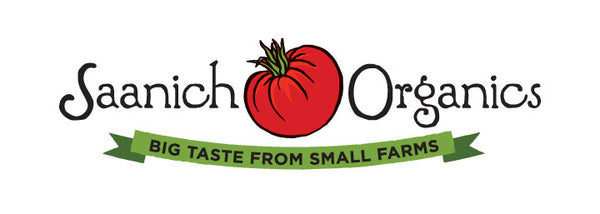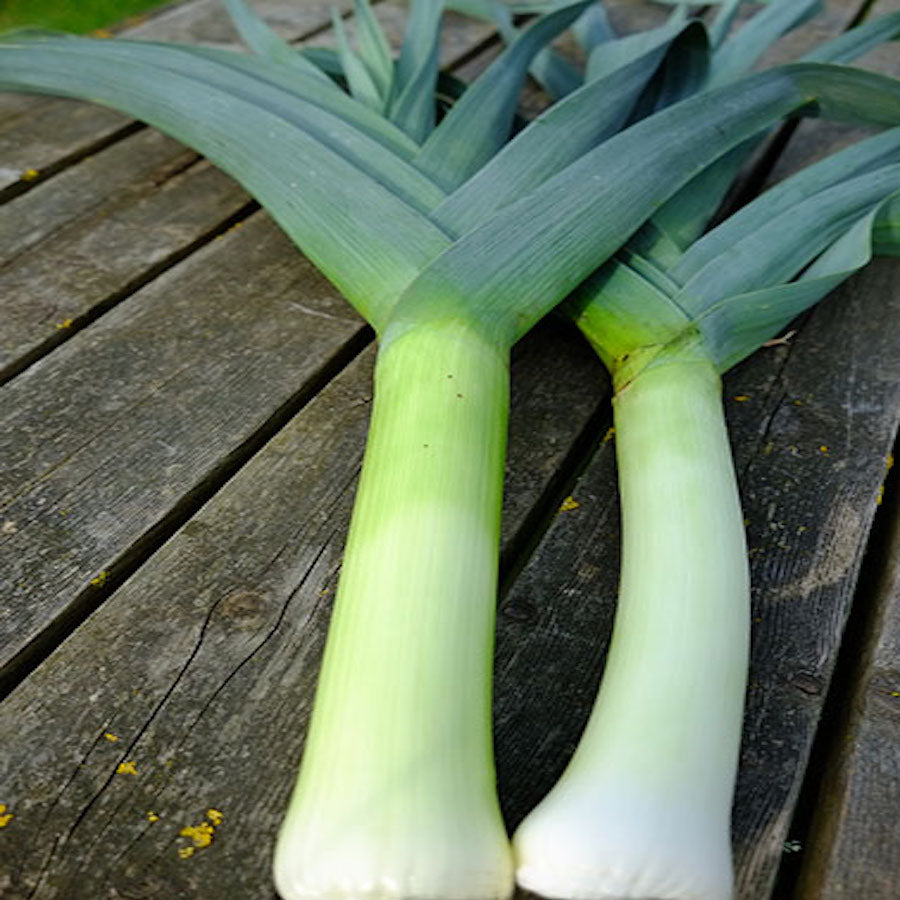My Store
Bandit Leek
Bandit Leek
Couldn't load pickup availability
A beautiful leek with excellent flavour that sweetens after frost and bred to be cold hardy! Excellent choice for overwintering in our coastal climate. Resistant to bolting and bulbing. Has very dark blue-green leaves. Sow 1/4 inch deep in flats in Feb-Mar and transplant 6-8” apart when ~8”tall. Plant deeply or mulch as they grow for more white stem. In fertile soil these babies can get to be 2-3 lb! 135 days to maturity.
Latin: Allium ampeloprasum var. porrum
Certified organic in British Columbia. IOPA # 1606, 1105, 1920.
How to Save Onion Seed
Fast Facts
Latin: Allium cepa (bulb onion), Allium fistulosum (green onion), Allium ampeloprasum (leek) Allium schoenoprasum (chive)
Cross Pollination: Will cross with other onions of same species
Isolation distance: 800 feet
Minimum Population Size (variety maintenance): 20-50 plants
Minimum Population Size (genetic preservation): 80 plants
A Note About Chives
Chives are the easiest of the alliums to save seed from, since a perennial chive patch will flower each year. To save chive seeds, skip to the “Flowering and Seed Set” section below. Note that chive seeds only tend to keep their quality for 1 year, so harvesting seed annually is recommended.
Overwintering Onions
Onion is a biennial plant, so it will only produce seeds in its second year of growth. Plant onions in their first year as you typically would. Allow plants to develop through the first season, planting early to ensure plants are healthy, with large roots for overwintering. Where possible, overwinter green onions and leeks in the ground, protecting from frost as needed. For larger onion bulbs, dig, brush off dirt (but do not use water to clean) and cure in a dry place with good air circulation before storing onion bulbs in a cool, dry, dark place until they can be planted out next spring. Keep an eye on onions in storage in order to catch any sprouting or mold as soon as possible. Select only onions with the most desirable traits, eg. big, round, well-formed bulbs, to grow out for seed.
Flowering & Seed Set
Shortly after plants begin growing in the spring they will bolt. The flower heads are striking round orbs at the top of tall stems, but the flowers themselves are quite hard to detect. Keep an eye out for pollinators buzzing around the flowering heads as an indication that your onions are flowering. Once the plants have set seed (past the flowering stage), stop watering the plants to encourage seed maturation and drying. When the seed capsules have begun to open and you can see the small black seeds inside, your onion seeds are ready to harvest. Keep a close eye on the seeds heads around this time, particularly if your garden is prone to wind, as certain onion varieties will more readily drop their seeds.
Onion Seed Cleaning
To harvest onion seeds, carefully cut the whole plant and hang it upside down over a tarp to dry completely. If space is a consideration, seed heads can be left on the plant as long as possible then the head alone cut and laid to dry. Detach seeds by shaking and gently rubbing the seed head between your hands. Next, screen and winnow until the chaff is removed, then label and store your seed in a cool, dry, dark place until the spring.


